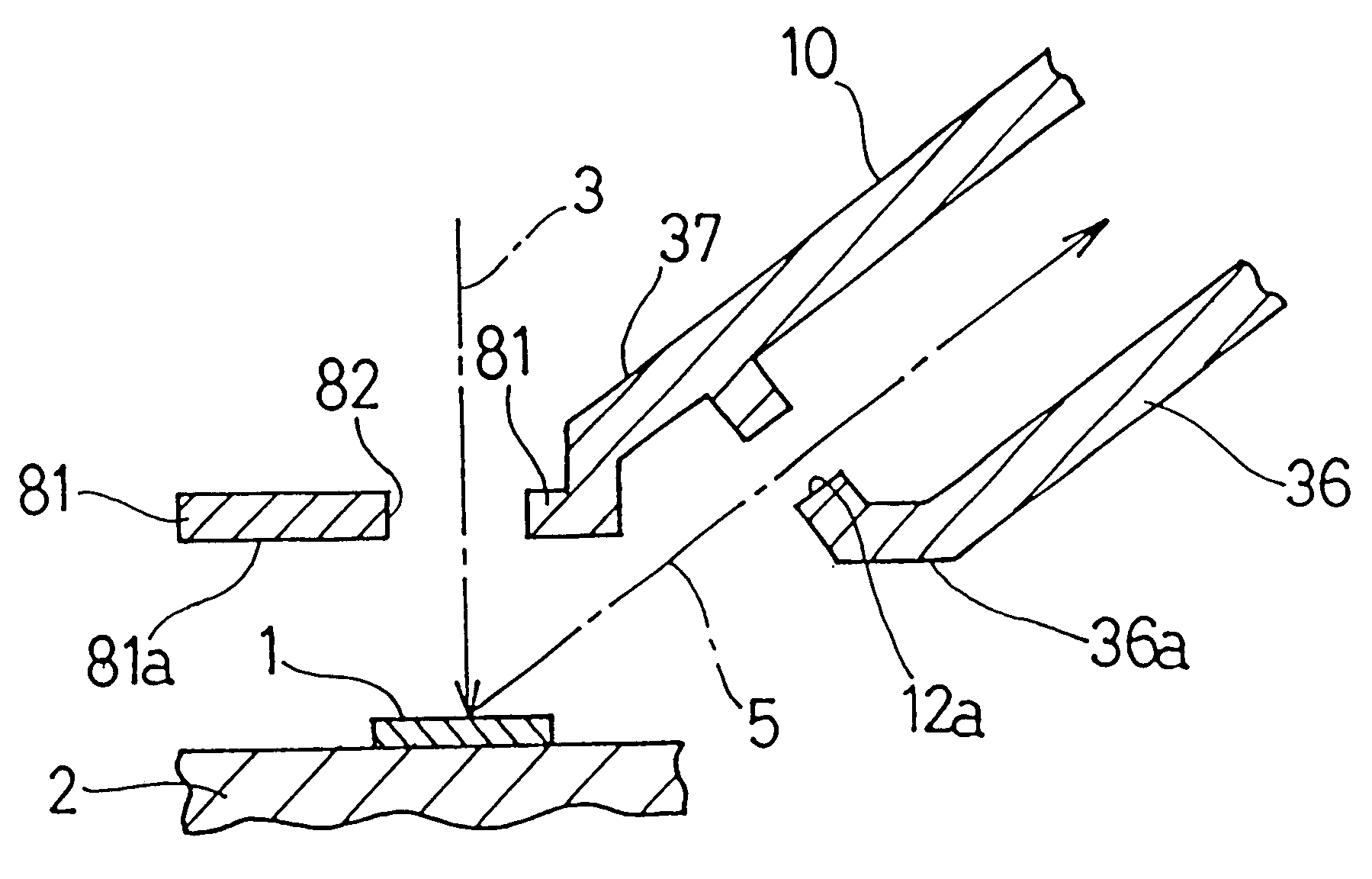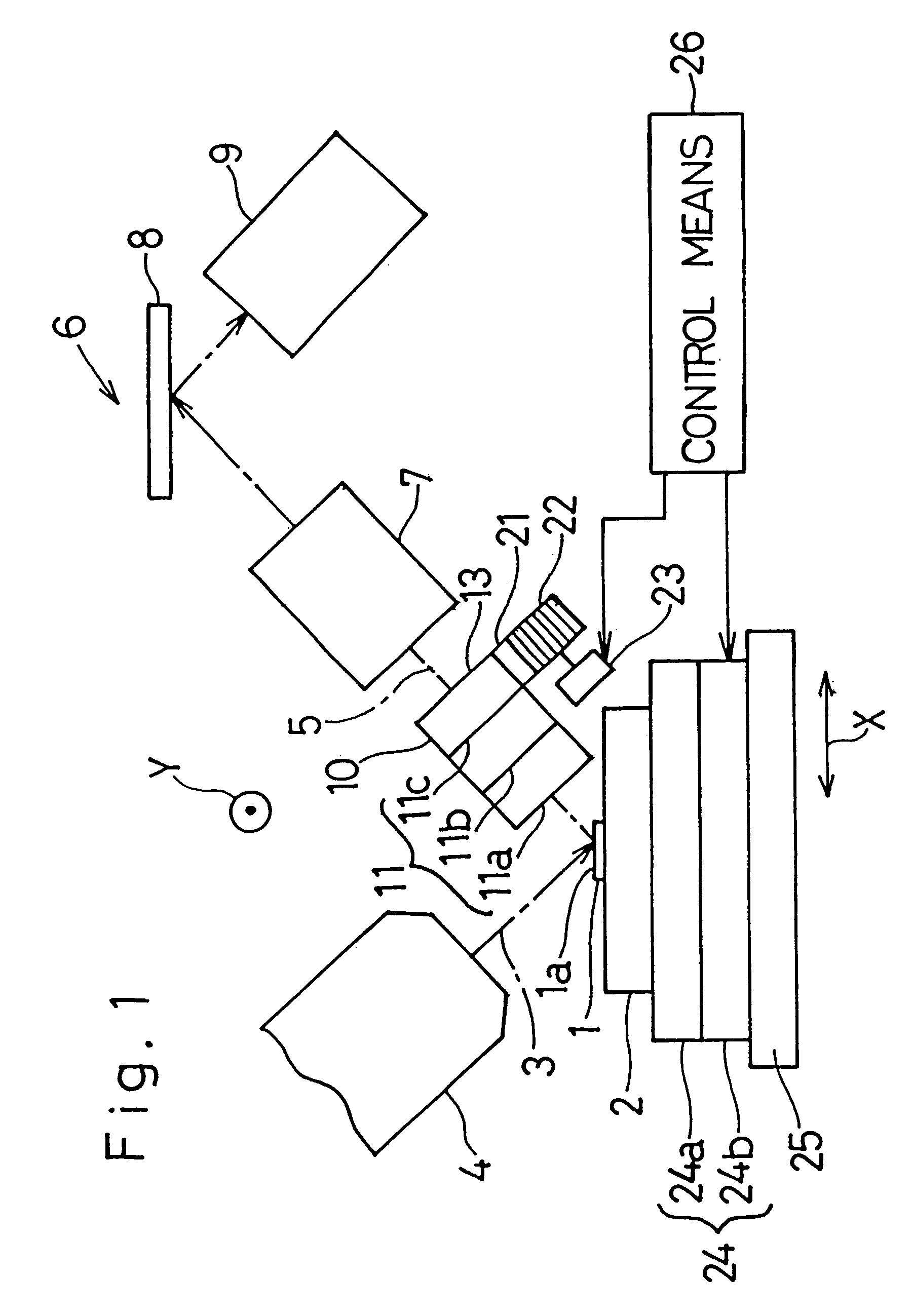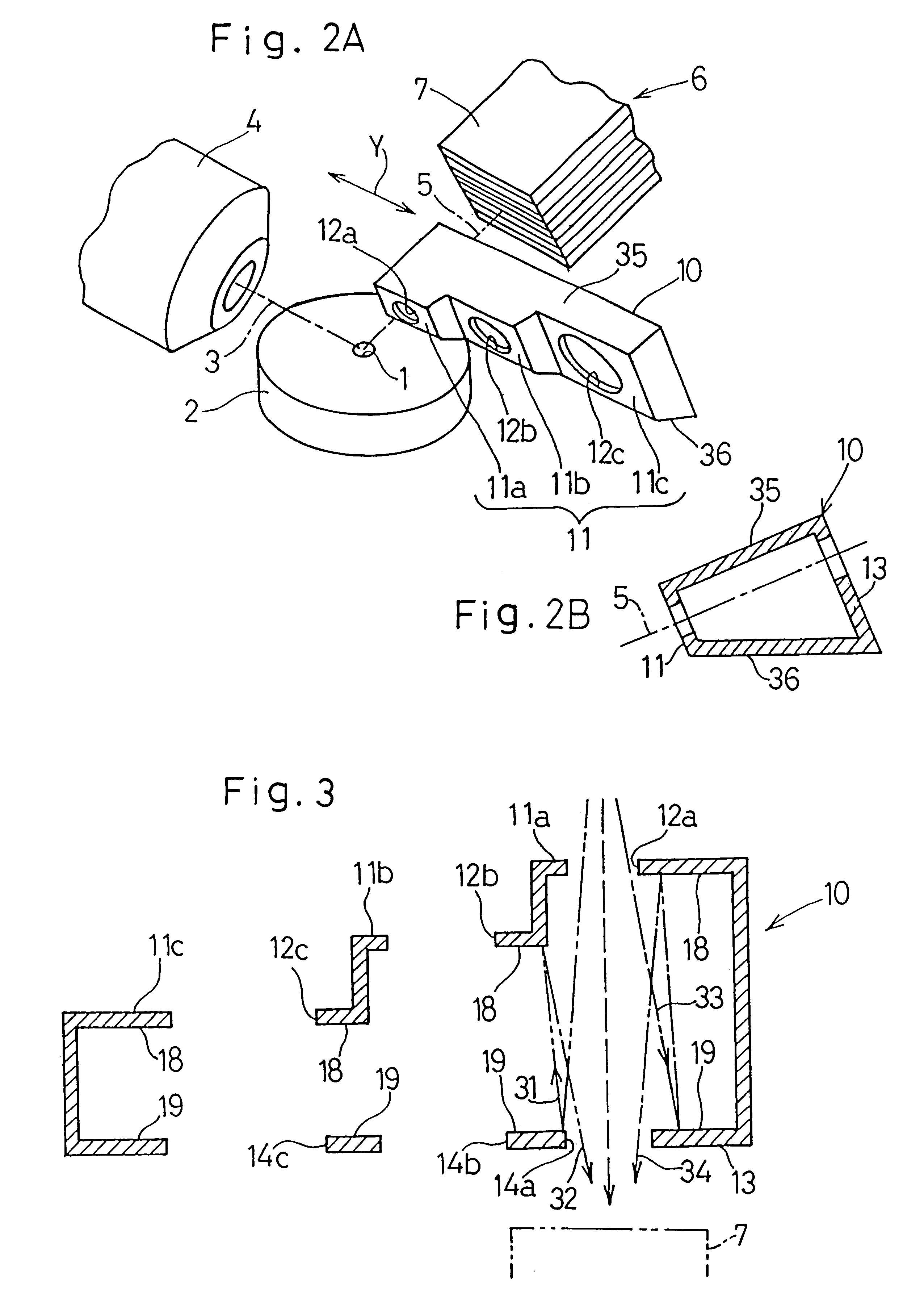Fluorescent X-ray analyzer
a fluorescent x-ray and analyzer technology, applied in the direction of material analysis using wave/particle radiation, instruments, diaphragm/collimeter handling, etc., can solve the problem that the s/n ratio cannot be improved sufficiently
- Summary
- Abstract
- Description
- Claims
- Application Information
AI Technical Summary
Problems solved by technology
Method used
Image
Examples
second embodiment
Accordingly, where the diameter of the target area to be measured is large, one of the apertures 42a to 42c in the oblong plate member of the second collimator 40 is selected. In such case, although there is a relatively large distance between any one of the apertures 42a, 42b and 42c in the second collimator 40 and the target area to be measured, detection of the disturbing rays can be effectively and sufficiently avoided since the diameter of the target area to be measured is large. In this way, the provision of the second collimator 40 between the first collimator 10 and the detecting means 6 is effective to reduce the length of the first collimator 10 in the direction Y as compared with the length which the first collimator 10 would assume if six apertures were to be formed in a row in the first collimator 10. Reduction in length of the first collimator 10 is in turn effective to avoid any possible increase of the distance the first collimator 10 must move in the direction Y and...
first embodiment
Assuming that the diameter of the target area to be measured is one of D1, D2 and D3, one of the apertures 12a to 12c in the first collimator 10 which corresponds to the diameter of the target area to be measured is brought into alignment with the path of travel of the fluorescent X-rays 5 between the sample piece 1 and the detecting means 6 as is the case with the present invention. At this time, the second collimator 40 is retained in the retracted position out of the path of travel of the fluorescent X-rays 5.
In the event that the diameter of the target area of the sample piece 1 is large, and when instruction indicating that the diameter of the target area to be measured is one of D3, D4 and D5 is inputted to the control means 26, the control means 26 controls the X-Y stage 24 so that the sample table 2 can be moved to a position at which the radiation intensity of the primary X-rays 3 towards the target area of the sample piece 1 to be measured is maximum. Simultaneously therew...
third embodiment
The fluorescent X-ray analyzer according to the present invention operates in the following manner.
The manner in which the fluorescent X-rays are partially cut off by selecting one of the apertures 12a to 12c in the first collimator 10 or one of the apertures 42a and 42b in the second collimator 40 is substantially similar to that employed in the practice of any one of the first and second embodiments of the present invention.
Where the target area of the sample piece 1 to be measured is small, the aperture 12d in the second hollow projection 62 is selected, in which case the second collimator 40 is moved in the direction Y to assume a potion rearwards of the aperture 12d and the fluorescent X-rays 5 passing through the aperture 12d are detected by the SSD 43. The SSD 43 is of an energy dispersive type and is capable of examining roughly the X-ray spectra from the sample piece without monochromatizing. Even when any one of the apertures 12a to 12c in the first hollow projection 61,th...
PUM
 Login to View More
Login to View More Abstract
Description
Claims
Application Information
 Login to View More
Login to View More - R&D
- Intellectual Property
- Life Sciences
- Materials
- Tech Scout
- Unparalleled Data Quality
- Higher Quality Content
- 60% Fewer Hallucinations
Browse by: Latest US Patents, China's latest patents, Technical Efficacy Thesaurus, Application Domain, Technology Topic, Popular Technical Reports.
© 2025 PatSnap. All rights reserved.Legal|Privacy policy|Modern Slavery Act Transparency Statement|Sitemap|About US| Contact US: help@patsnap.com



